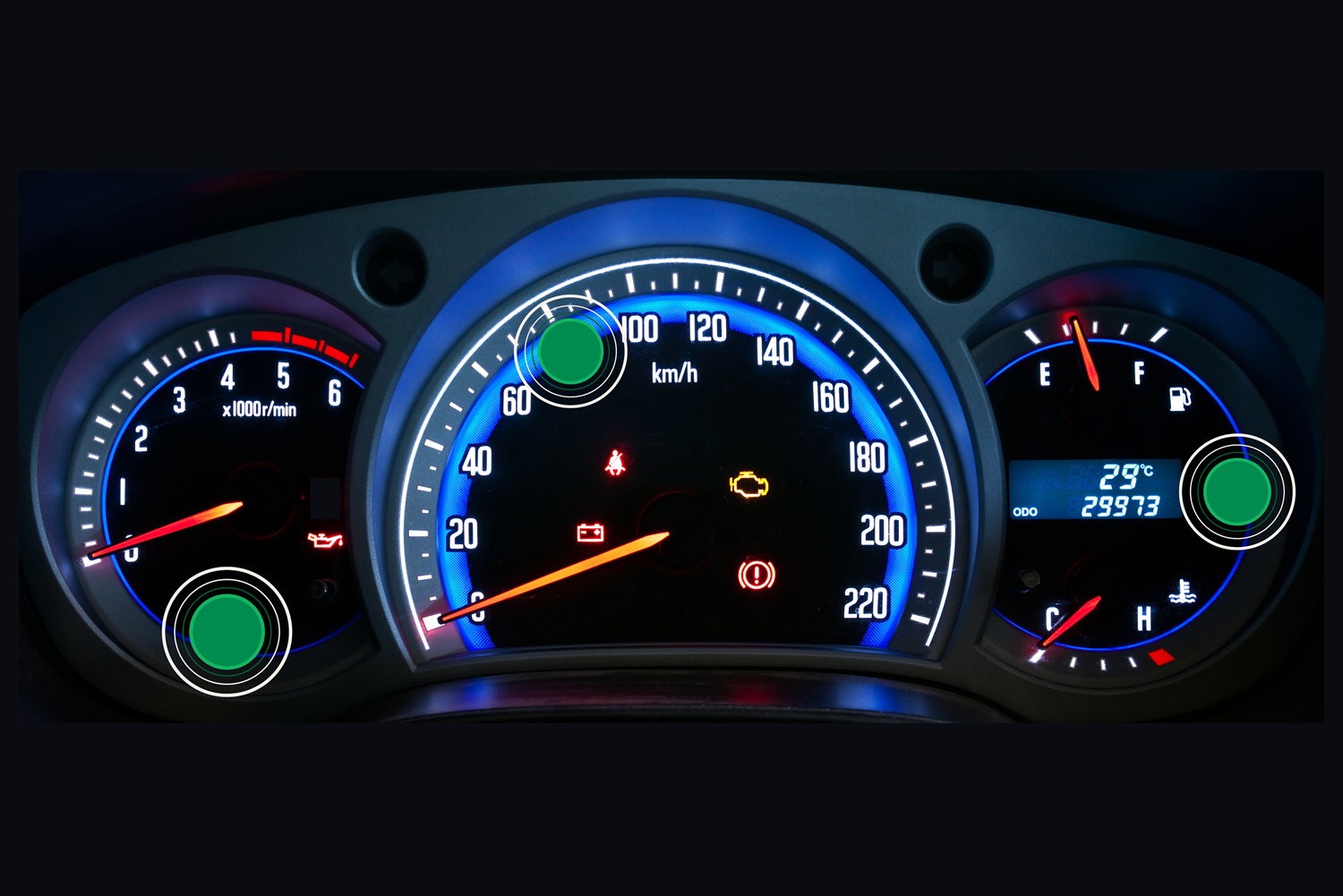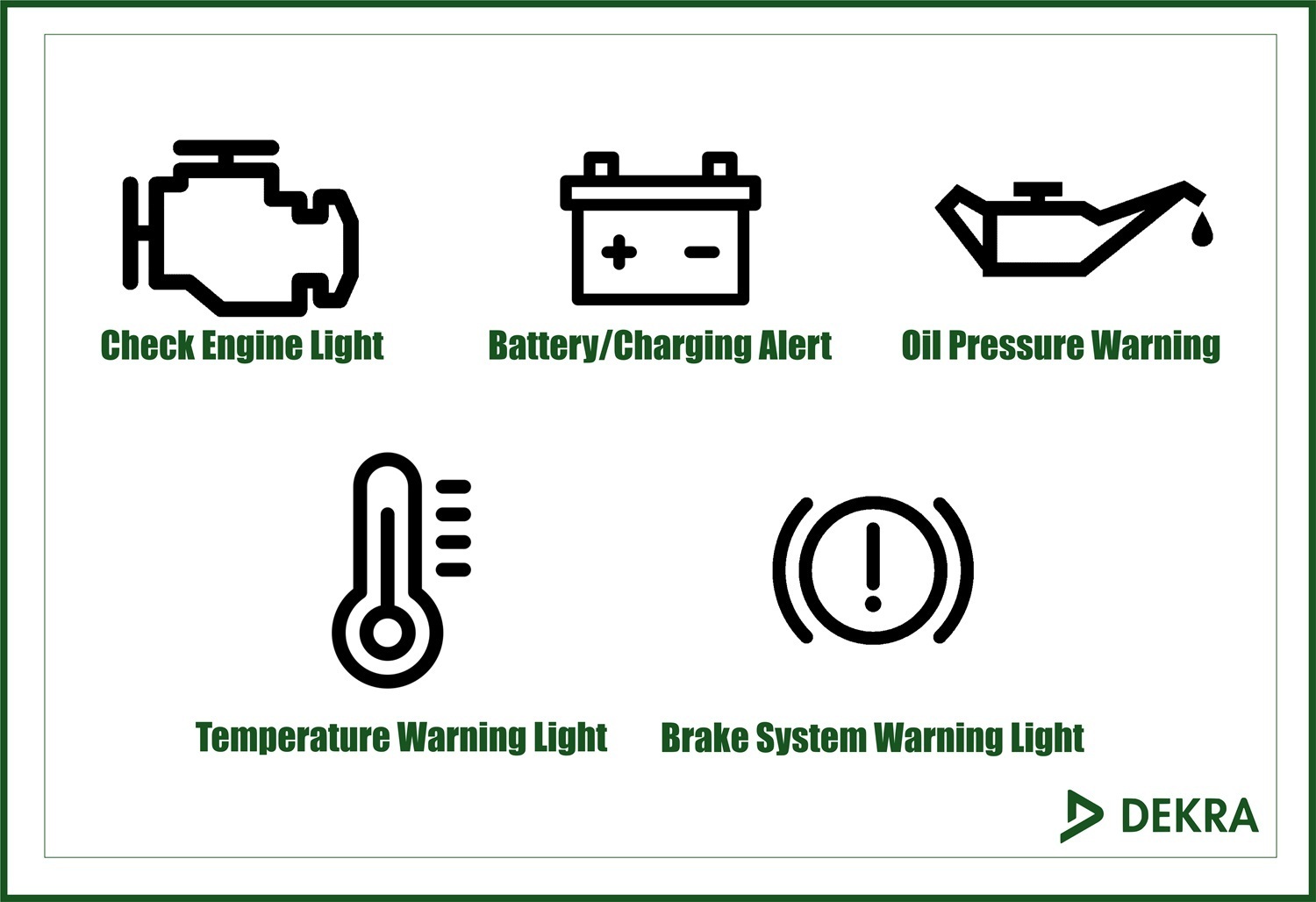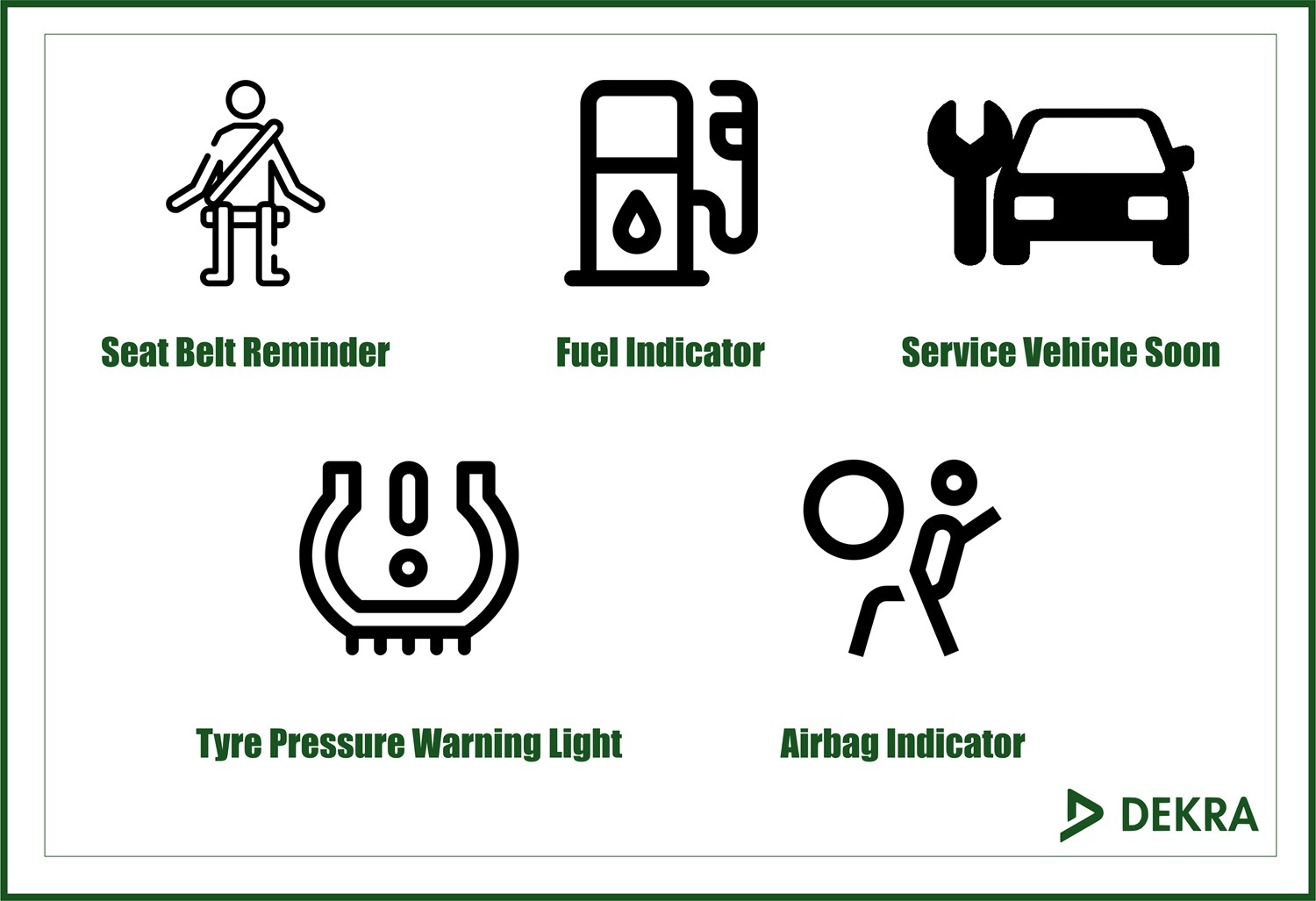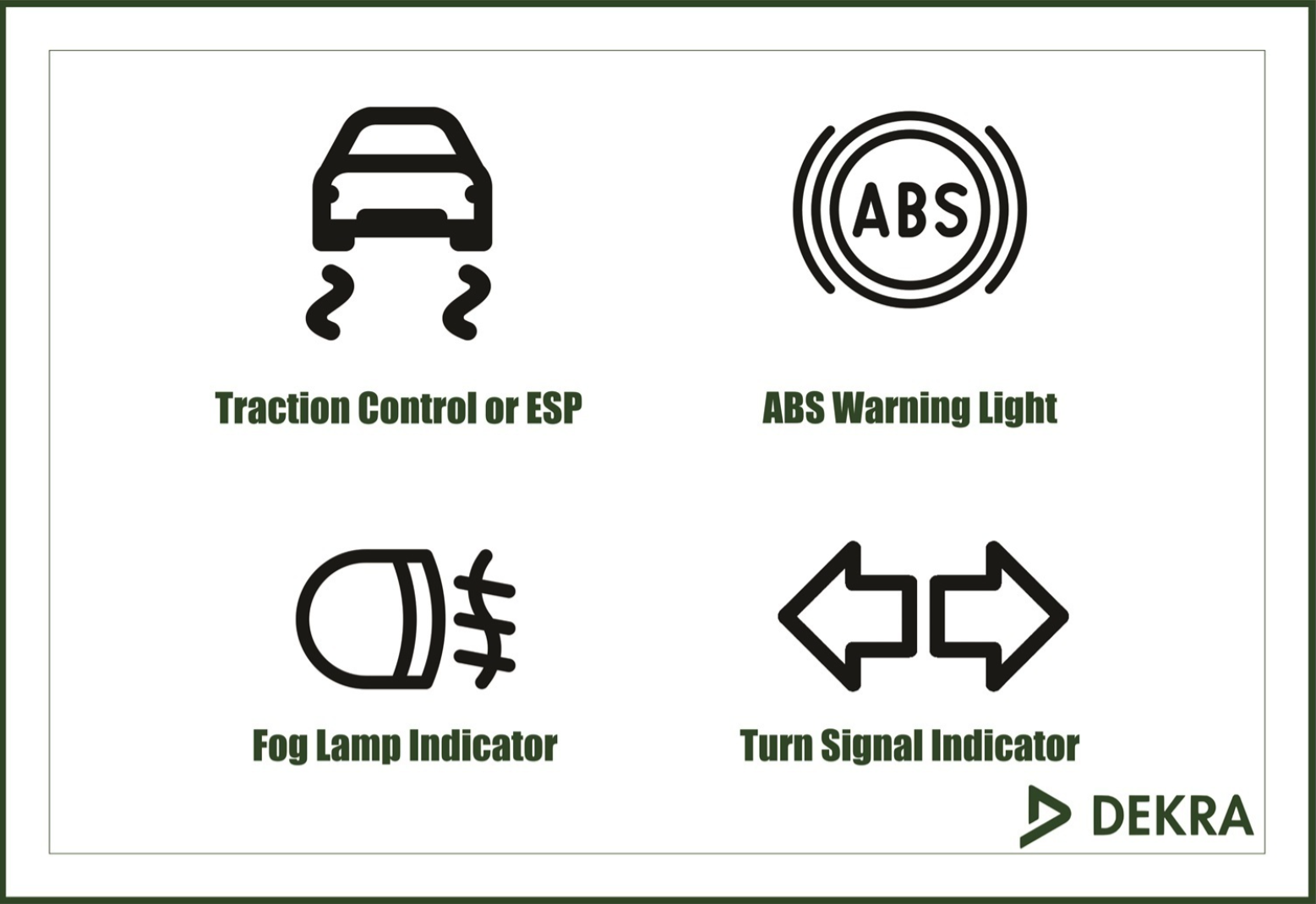
Understanding Your Car Dashboard: A Guide to Warning Lights and Indicators
We've all been there. That moment of panic when your car's dashboard has a new light you've never seen before. What is happening!? Those little warning lights and indicators are your car's way of communicating with you, and you need to pay attention to them. Understanding your car dashboard and what these lights mean can prevent breakdowns, avoid costly repairs, and most importantly, keep everybody safe. And that's exactly what we'll do in this article. Are you seeing lights and don't know what they mean? Bring your vehicle for a DEKRA Technical Inspection, and let us find out where it's coming from.
A disclaimer before we get started. Please note that not all lights listed below will appear in every vehicle on the road and there will be warning lights that are not covered in this article.
Common Dashboard Warning Lights
- Check Engine Light
When it comes to understanding your car dashboard, the Check Engine Light is one you should familiarise yourself with. It may indicate a range of issues from a loose petrol/diesel cap to serious engine problems. If tightening the cap doesn't turn off the light, use an onboard diagnostics scanner (OBD2) to read the error codes for more insight.
- Battery/Charging Alert
This light signals potential problems with your car's electrical system, possibly due to battery or alternator issues. If you see this, limit the use of electrical components and consider testing the battery and alternator with a multimeter for voltage irregularities.
- Oil Pressure Warning
A lit Oil Pressure Warning light indicates low oil pressure, risking significant engine damage. Turn off your engine to check the oil level immediately. If the light persists despite normal oil levels, the issue might be with the oil pump or the oil filter needing replacement.
- Temperature Warning Light
This light means your engine is overheating, possibly due to coolant leaks or a faulty thermostat. Pull over, let the engine cool, check the coolant level, and ensure the radiator cap and thermostat are functioning properly.
- Brake System Warning Light
This light can signify low brake fluid, worn-out brake pads, or ABS issues. Check your brake fluid, and if the light remains on, inspect the brake pads and discs for wear, and ensure the ABS sensors are clean and unobstructed.

Icons created by Freepik - Flaticon
Safety and Maintenance Indicators
- Seat Belt Reminder
This helpful nudge is your car's way of reminding you to buckle up for safety. It's not just about following the law; wearing your seat belt significantly reduces the risk of injury or death in an accident.
- Fuel Indicator
This indicator is a crucial heads-up to refuel soon to avoid getting stranded. Keeping your tank above a quarter full also helps maintain your fuel pump, ensuring a smoother and more reliable drive.
- Service Vehicle Soon
When you spot the 'Service Vehicle Soon' light, it's time to consider general maintenance checks. This light can indicate anything from a need for an oil change to more comprehensive system checks. Staying on top of these alerts can help to keep your car in peak condition and can prevent larger issues down the road.
- Tyre Pressure Warning Light
This indicator is key to ensuring your tyres are at the optimal pressure for safety and efficiency. Proper tyre pressure ensures better vehicle handling, longer tyre life, and improves fuel efficiency. Take the time to check and adjust your tyre pressure accordingly.
- Airbag Indicator
If the airbag indicator stays lit or flashes, it's signalling a potential issue with your airbag system. This could mean the airbags might not deploy correctly in an accident, compromising your safety. Understanding your car dashboard and being aware of this light can end up saving your life.

Icons created by Freepik - Flaticon
Additional Indicators and Their Meanings
- Traction Control or ESP
Traction Control or Electronic Stability Program (ESP) lights up to let you know the system is actively working to maintain grip and stability, especially in slippery conditions. This feature is a true boon when you're navigating wet or slippery roads, helping prevent wheel spin and loss of control. Remember, while it's a fantastic aid, it doesn't replace safe driving practices, so continue to drive cautiously in adverse conditions.
- ABS Warning Light
The ABS Warning Light, indicating a concern with your Anti-Lock Braking System, is one you shouldn't ignore. ABS helps prevent wheel lock-up during emergency braking, ensuring better control and shorter stopping distances. If this light stays on, your ABS might not be working properly, which could affect your ability to stop quickly in an emergency.
- Fog Lamp Indicator
This little light on your car dashboard, indicating that your fog lamps are on, is a feature that's particularly handy in, well, foggy conditions. Fog lamps improve visibility near the ground where fog tends to hover, enhancing your driving safety. Just remember to turn them off when conditions clear to avoid draining your battery. When you understand your car dashboard, features like this make challenging times on the road a little easier.
- Turn Signal Indicator
The Turn Signal Indicator is your car's way of communicating your intentions to other drivers. It flickers when you're about to turn or change lanes, playing a vital role in preventing accidents and misunderstandings on the road. Please always use it, it's a simple action that greatly enhances road safety for everyone.

Icons created by Freepik - Flaticon
What to Do When a Warning Light Comes On
Understanding your car dashboard's warning lights and indicators is very important because it tells you exactly where to start looking if something is wrong with your vehicle. The first thing you need to do is to identify what the light means. If it hasn't been covered in our list, your vehicle's manual is a great resource. If the light points to something you can address yourself, like securing a loose petrol/diesel cap, do so as soon as possible. However, for more complex issues that you're not equipped to handle, it's best to seek professional assistance.
Here's where DEKRA can help
A DEKRA Technical Inspection is an extensive and thorough evaluation of your vehicle's condition, and it is conducted by highly experienced technicians. This comprehensive assessment covers every single aspect of the vehicle, from bumper to bumper, ensuring that all mechanical and technical components are in optimal condition.
Understanding your car dashboard is a must since these warning lights and indicators serve as your vehicle's essential communication tools, alerting you to various conditions that require your attention. If you're ever in doubt about what a specific warning light means or the level of its severity, a DEKRA Technical Inspection is your go-to solution. Our experienced technicians conduct thorough, comprehensive assessments, covering every part of your vehicle's condition. This detailed inspection clarifies any concerns raised by warning lights and aids in informed decision-making regarding your vehicle's maintenance and repair. Click/tap here to find your closest DEKRA right now and book your inspection.